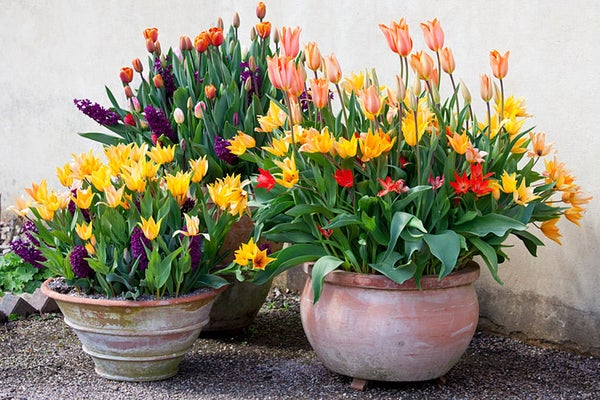
Quick facts
Plant spring-flowering bulbs in autumn
Choose several different types, in a range of cheery colours
Place the pot in a sunny spot outdoors
Getting started
Planting pots of is an easy and fun way to add spring cheer to a sunny doorstep or patio. You can of course just plant a single type of bulb in each pot, but why not be more adventurous and try several different bulbs in layers? You can choose a combination that will either all flower at the same time, for maximum impact, or in succession for a longer-lasting display.
If you want them all to flower simultaneously, simply pick your preferred flowering time (early, mid or late spring), then browse the bulb catalogues and websites for your preferred colour combinations – either contrasting or complementary hues. Also look for different heights, to give a multi-tiered display.
For a longer-lasting display, on the other hand, choose bulbs that will flower in succession from early to late spring. Each new set of blooms and leaves will help to hide the fading foliage of the previous set. For this you need to arrange the layers with the largest, latest-flowering bulbs at the bottom and the smallest, earliest bulbs at the top:
- the first (lowest) layer of bulbs should be largest, with the latest flowering time, such as late tulips or late pheasant’s eye narcissi
- the second layer should be slightly smaller bulbs that flower a little earlier, such as early miniature daffodils or dainty mid-season daffodils
- the top layer (if you have room for three) should be the smallest bulbs with the earliest flowers, such as crocuses or snowdrops
What you’ll need:
- Large container with drainage holes
- Broken pieces of pot to cover the drainage hole (optional)
- Selection of spring-flowering bulbs, such as crocuses, daffodils and tulips
- Peat-free multi-purpose compost
Top tip
If you have squirrels in your garden, place a chicken-wire cover over the container after planting to stop them digging up the bulbs. Remove the wire mesh in spring, as soon as the first shoots start to appear.
How to plant bulbs in a pot in five easy steps
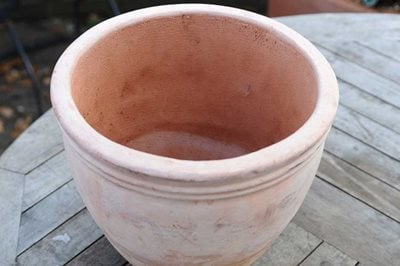
- Choose a large pot Make sure it is at least 30cm (1ft) wide and deep, with drainage holes in the base. If there's just one large drainage hole, cover it with a few pieces of broken pot, to stop the washing out.
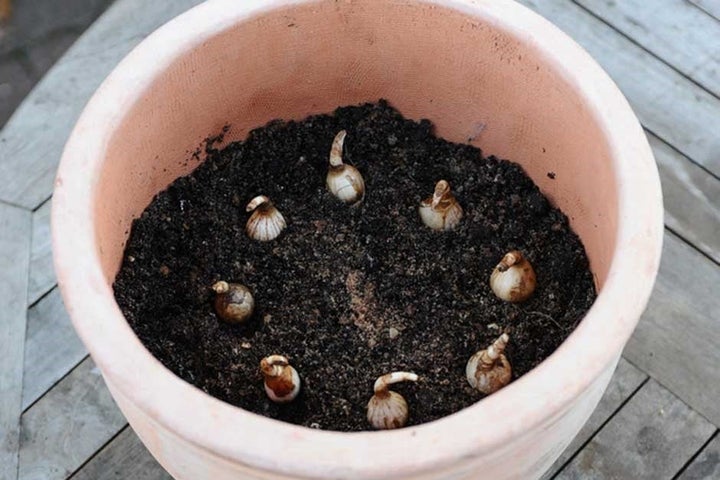
- Add compost Place at least 10cm (4in) of compost in the bottom of the pot, then arrange your first layer of on top, pointed end upwards. You can space them quite closely, only a bulb’s width apart, to fit in as many as possible.

- Cover the bulbs Add more compost to cover the bulbs completely, then firm down gently. Then position your next layer of bulbs, in a similar way to the first, and cover with more compost.
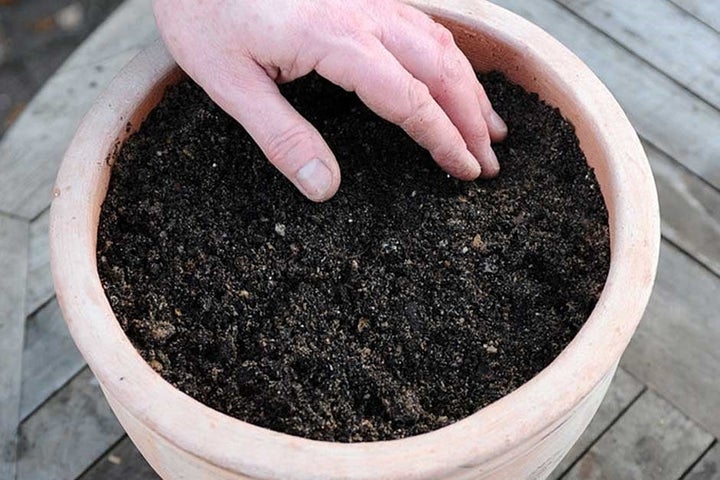
- If you still have plenty of room, add more bulbs You can add a third layer of bulbs, then finish off with a final 5–10cm (2–4in) layer of compost (approximately three times the height of the bulbs in the top layer). Firm it gently, making sure the surface is at least 2cm (1in) below the rim.
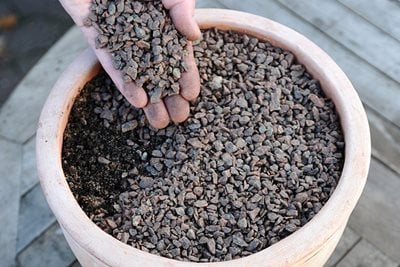
- Spread a thick layer of gravel If you have gravel available spread some over the surface to deter weeds, then water well to settle the compost. Place the pot outdoors in a warm, sunny spot and the first shoots will start to appear in early spring.
Aftercare
- Water the container regularly once the shoots begin to emerge in spring. But take care not to let the get – most prefer good drainage.
- Deadhead the faded flowers, so the plants don’t waste energy producing seeds.
- Allow the leaves to die down naturally, so they can replenish the bulbs for flowering next year.
- After flowering, move the container to a less prominent position until the following spring, or replant the bulbs into your borders – see our advice pages on planting bulbs and naturalising bulbs, and a step-by-step guide to planting bulbs in grass.







